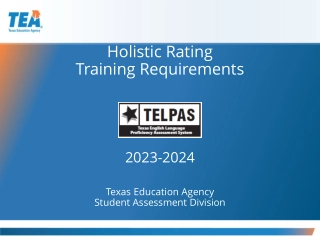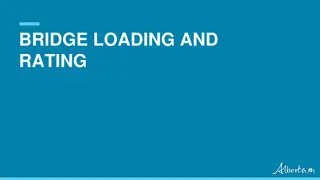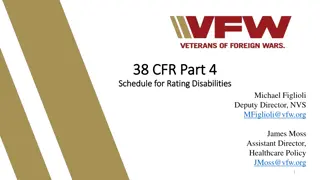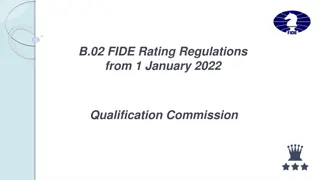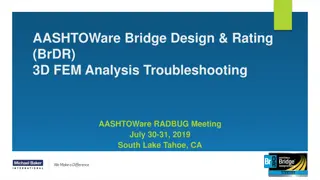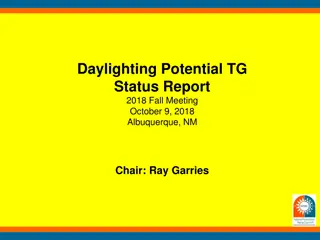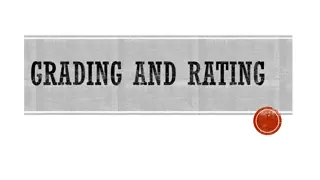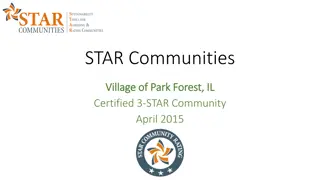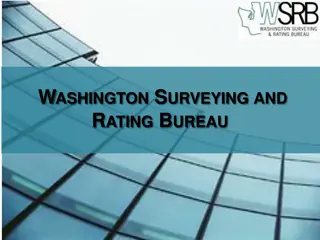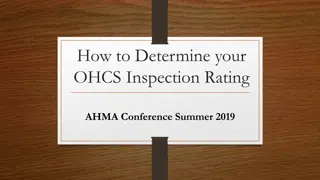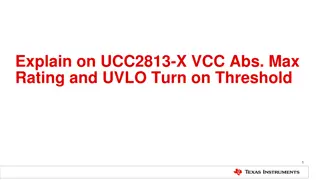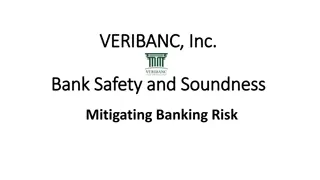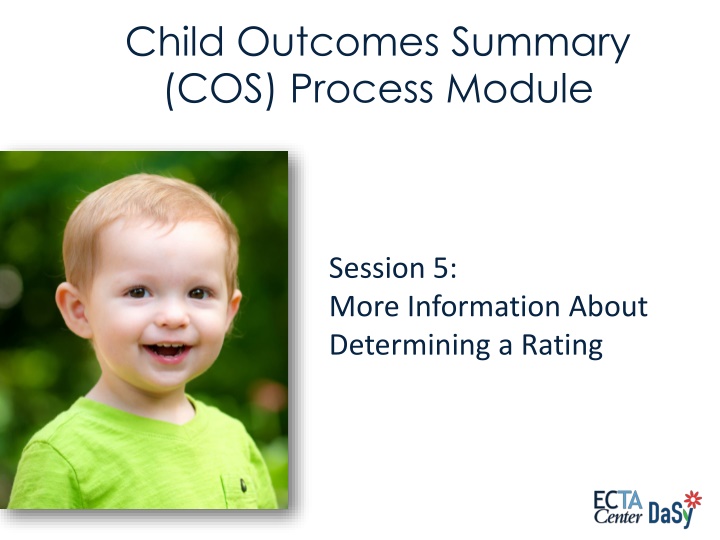
Child Outcomes Summary Process for Rating Determination
Explore the Child Outcomes Summary (COS) Process Module for determining ratings based on a decision tree. Learn how to effectively use the decision tree, consider the child's skills compared to age-expected levels, and provide ratings for all three outcome areas. Remember not to adjust for prematurity when determining ratings.
Download Presentation

Please find below an Image/Link to download the presentation.
The content on the website is provided AS IS for your information and personal use only. It may not be sold, licensed, or shared on other websites without obtaining consent from the author. If you encounter any issues during the download, it is possible that the publisher has removed the file from their server.
You are allowed to download the files provided on this website for personal or commercial use, subject to the condition that they are used lawfully. All files are the property of their respective owners.
The content on the website is provided AS IS for your information and personal use only. It may not be sold, licensed, or shared on other websites without obtaining consent from the author.
E N D
Presentation Transcript
Child Outcomes Summary (COS) Process Module Session 5: More Information About Determining a Rating
Decision Tree for Summary Rating Discussions Does the child ever function in ways that would be considered age-expected with regard to this outcome? Yes (consider rating 4 7) No (consider rating 1 3) Does the child use any immediate foundational skills related to this outcome upon which to build age- expected functioning across settings and situations? Does the child function in ways that would be considered age-expected across all or almost all settings and situations? No Yes No Yes To what extent is the child s functioning age-expected across settings and situations? Does anyone have concerns about the child s functioning with regard to the outcome area? To what extent is the child using immediate foundational skills across settings and situations? Uses skills that are not yet immediate foundational Occasional use of immediate foundational skills Uses immediate foundational skills most or all of the time Uses a mix of age-expected and not age- expected behaviors and skills Occasional use of age- expected skills; more behavior that is not age- expected Yes No Rating = 1 Rating = 2 Rating = 6 Rating = 7 Rating = 4 Rating = 5 Rating = 3 Updated 11/12/2015 The Early Childhood Technical Assistance Center
Using the Decision Tree Effectively Not a script Guides the team to consider the implications of the distance of the child s skills from age expected for the selection of a rating
Always Provide Ratings for All Three Outcomes Ratings are needed for alloutcomes even if No one has concerns about a child s development in an outcome area. A child has delays in one or two outcome areas but not in all three. 5
Do Not Adjust Age for Prematurity The purpose of the COS rating is to document current functioning. Donot adjust for prematurity. Determine the rating on the basis of what would be expected for the child s chronological age.
Children Who Have Only Communication Delays The COS team needs to focus discussions on whether and how communication difficulties are affecting the child s functioning with regard to each of the three outcomes.
Discussion Points for the Team Is the child able to communicate with peers in play situations? Can others understand the child when he is making a request ? Is the child able to convey critical needs (e.g., safety needs)? How does the child s communication influence her functioning across settings and with different people?
Children With Atypical Functioning Sometimes children display skills or behaviors that are different from the typical progression of skills. Examples of atypical behaviors: Self-stimulating behaviors Perseverations on specific activities Strict adherence to daily rituals Echolalia
Considering Atypical Functioning in Ratings To determine a rating, consider: The extent to which the atypical behavior influences the child s functioning in the outcome area; and As with all ratings, the extent to which the child shows age-expected functioning in the outcome area across settings and situations.
Assistive Technology Devices Assistive technology device Any item, piece of equipment, or product system, whether acquired commercially off the shelf, modified, or customized, that is used to increase, maintain, or improve functional capabilities of a child with a disability. (IDEA, 2004) If the child has access to and uses an assistive technology device, rate the child s functioning using that device. If the child uses an assistive technology device only in some settings (e.g., only at home), think about this as you would any instance where the child displays different skills or behaviors across settings.
Can a Child Have All 7s at Entry? Ratings reflect everyday functioning. Children with visual impairments or other diagnosed conditions may show age-expected functioning in all three outcomes even at program entry. For these children, services are provided to keep their functioning at age expectations.
Final Points to Ponder Click the back arrow to return to the module.

